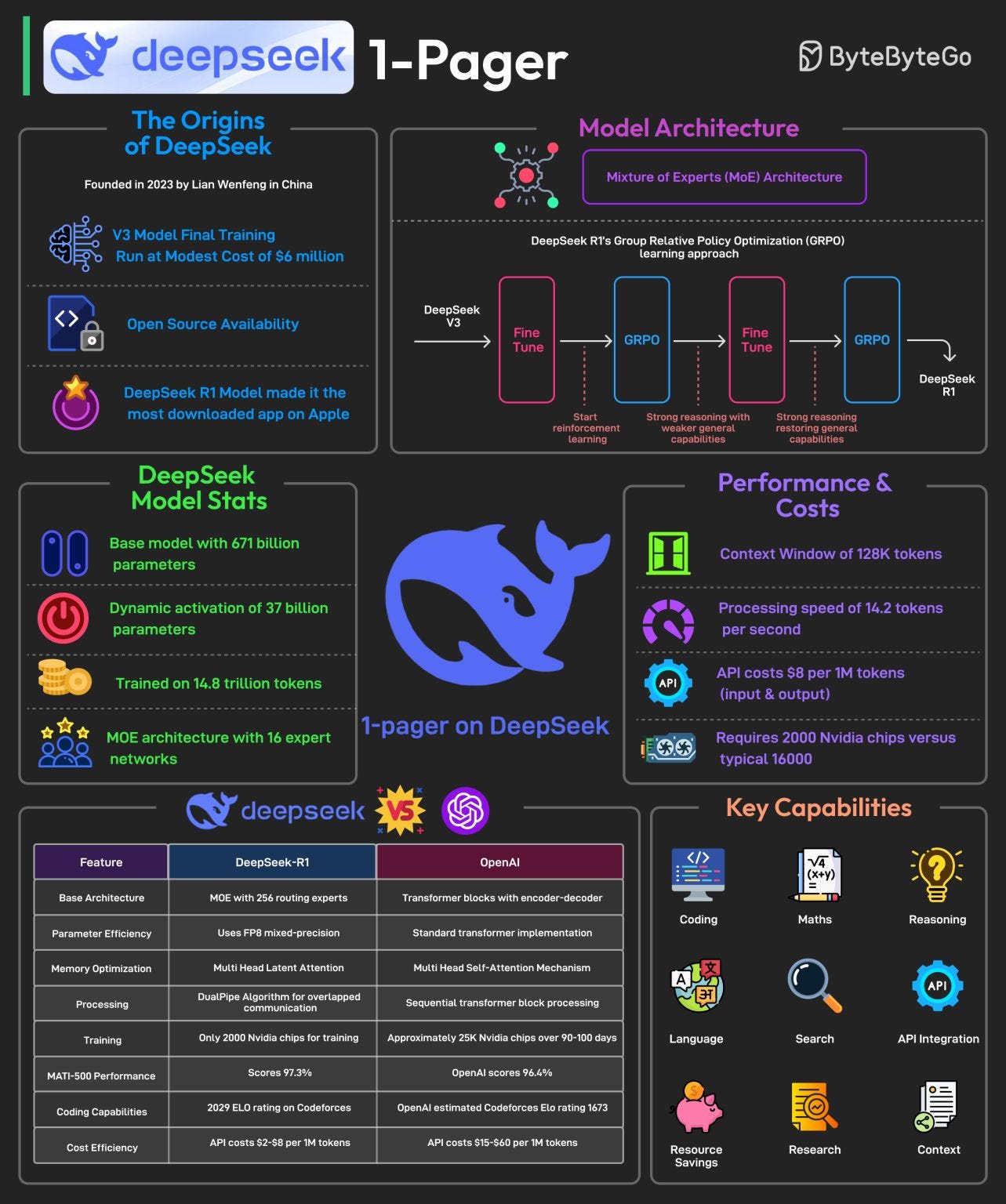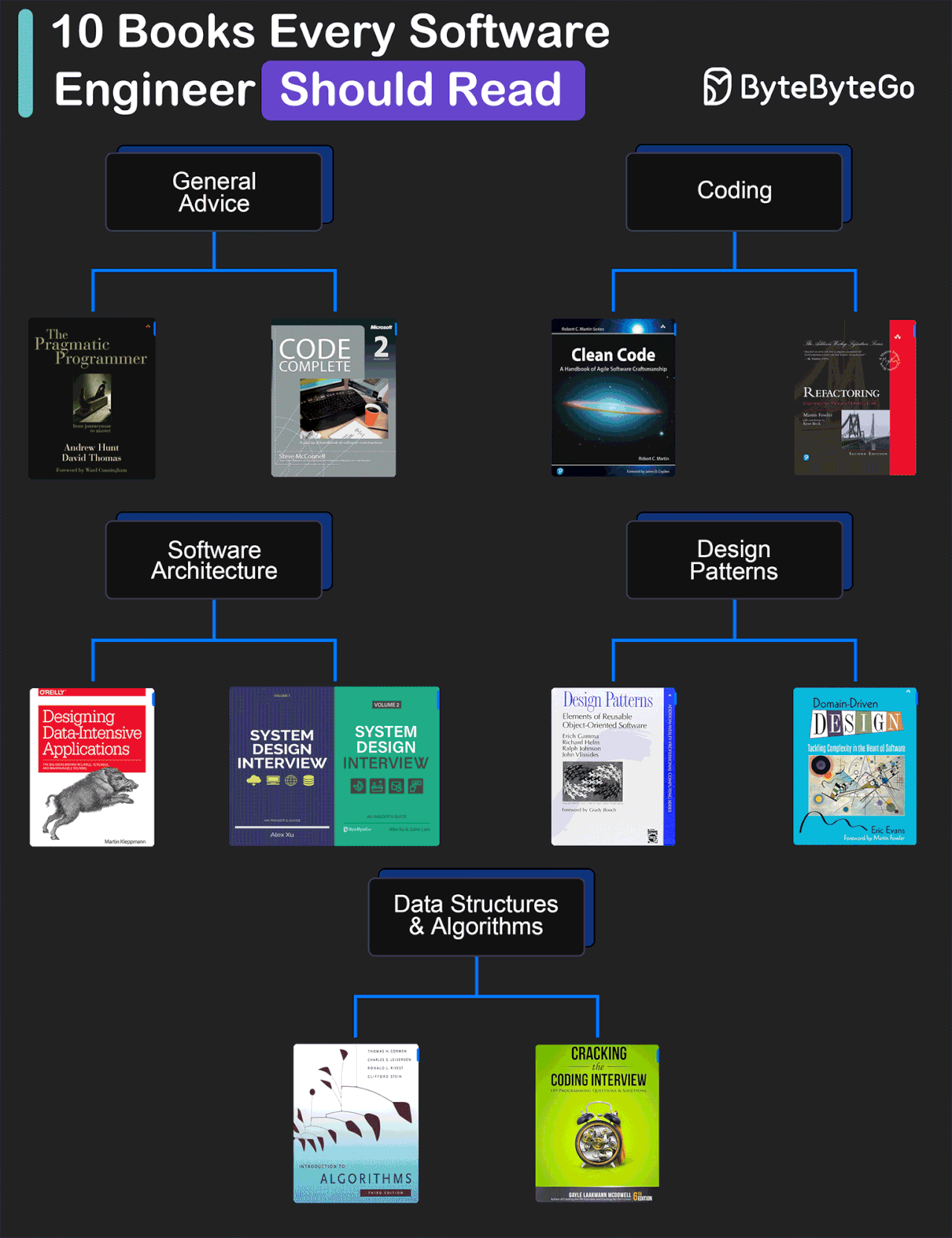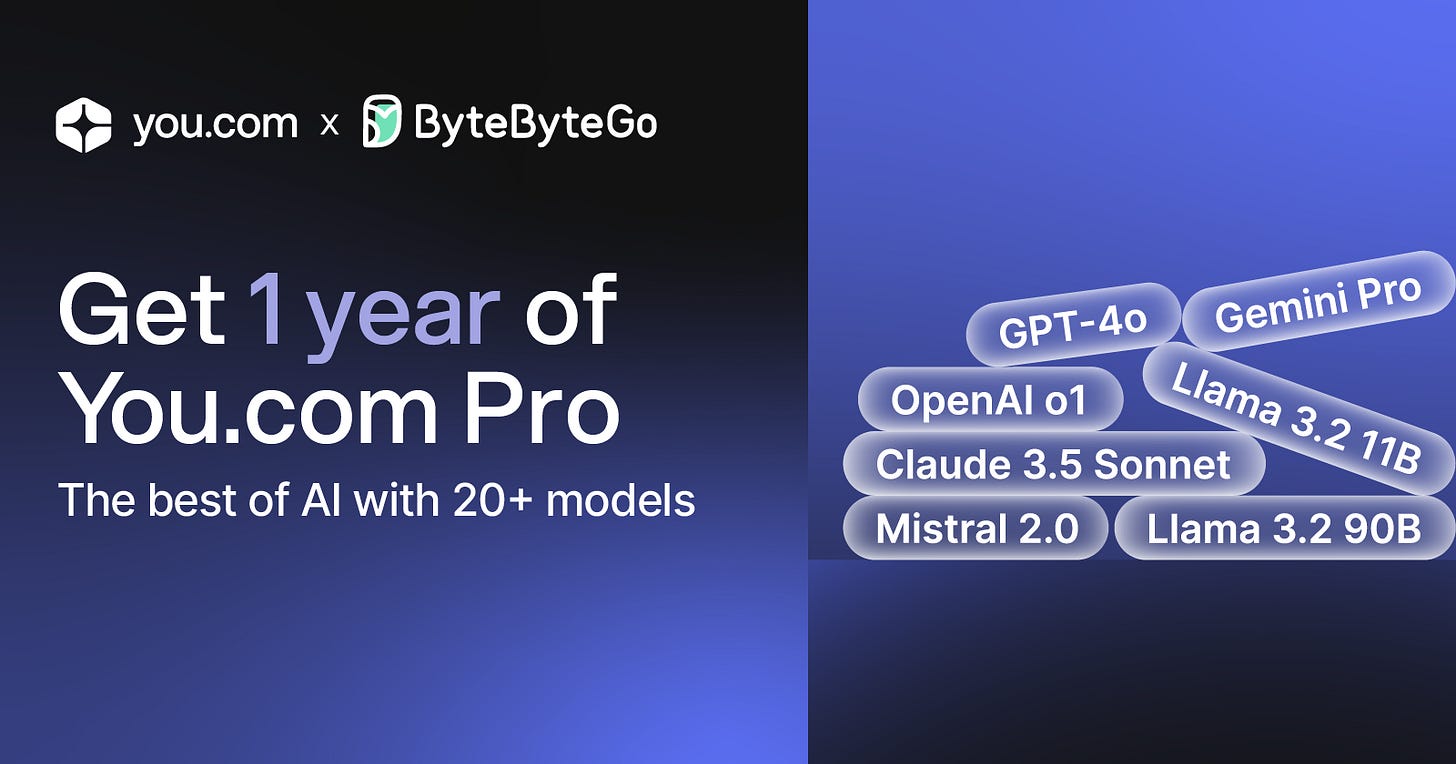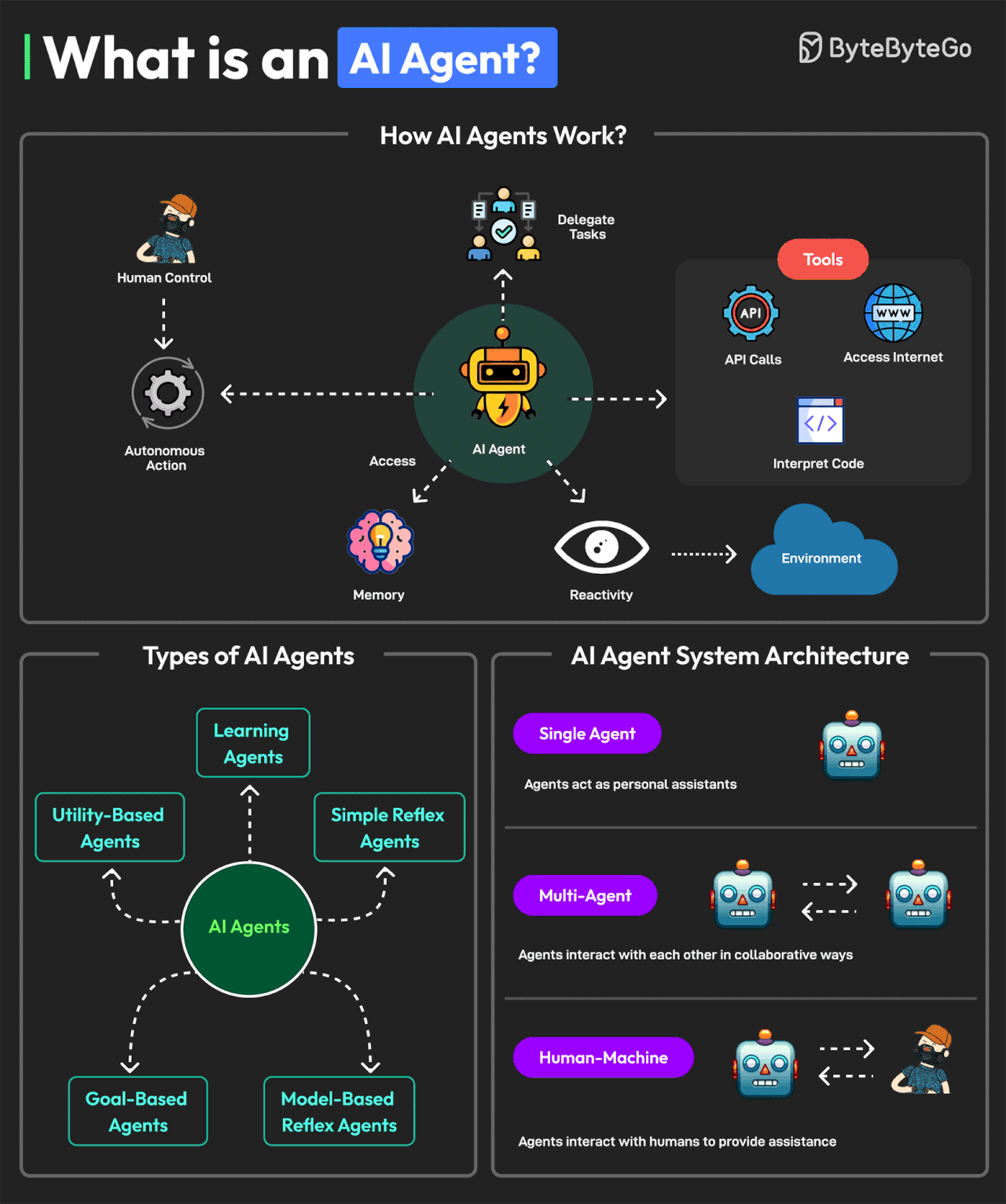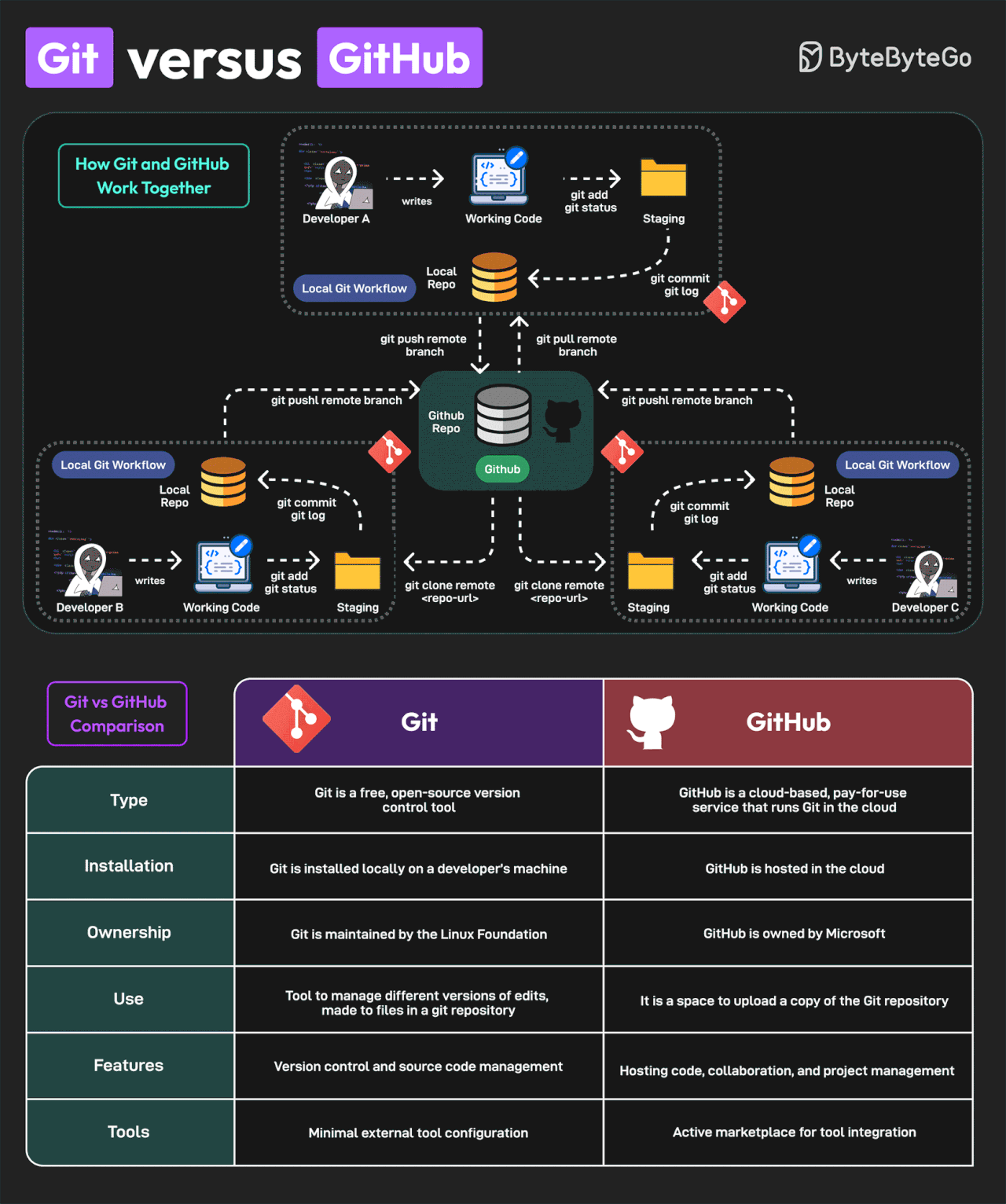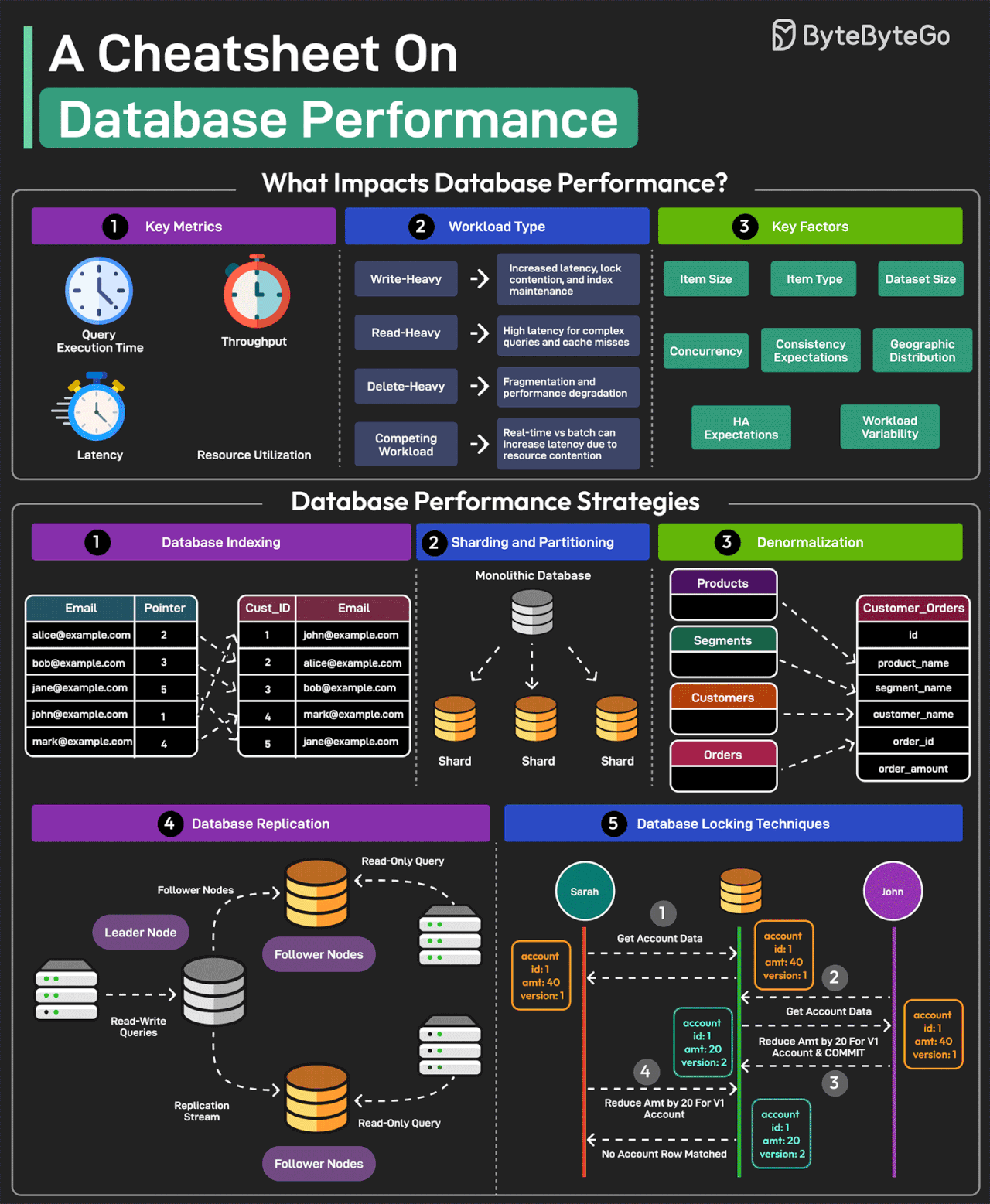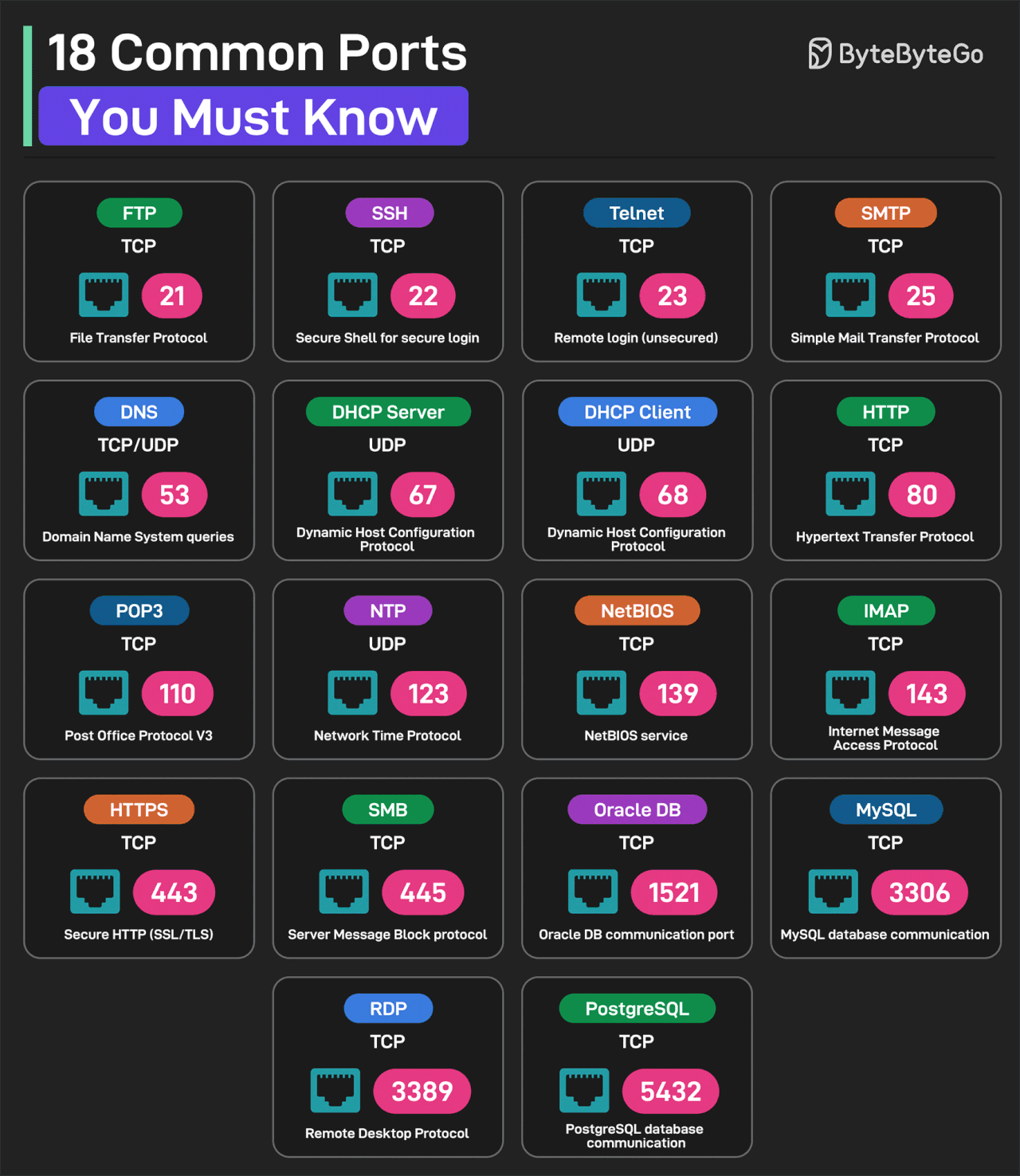Build the API your users deserve (Sponsored)
Creating a best in class API experience for your partners and customers shouldn't require an army of engineers. Speakeasy’s platform automates the generation of idiomatic SDKs, custom-branded docs, and robust test suites that are as good as what you'd build yourself. That means you can unlock API revenue while keeping your team focused on what matters most: shipping new products. All you need to get started is your OpenAPI document.
This week’s system design refresher:
DeepSeek 1-Pager
My Favorite 10 Books for Software Developers
What is an AI Agent?
Git vs GitHub
A Cheatsheet on Database Performance
18 Common Ports Worth Knowing
SPONSOR US
DeepSeek 1-Pager
It is said to have developed a powerful AI model at a remarkably low cost, approximately $6 million for the final training run. In January 2025, it is said to have released its latest reasoning-focused model known as DeepSeek R1.
The release made it the No. 1 downloaded free app on the Apple Play Store.
Most AI models are trained using supervised fine-tuning, meaning they learn by mimicking large datasets of human-annotated examples. This method has limitations.
DeepSeek R1 overcomes these limitations by using Group Relative Policy Optimization (GRPO), a reinforcement learning technique that improves reasoning efficiency by comparing multiple possible answers within the same context.
Some facts about DeepSeek’s R1 model are as follows:
DeepSeek-R1 uses a Mixture-of-Experts (MoE) architecture with 671 billion total parameters, activating only 37 billion parameters per task.
It employs selective parameter activation through MoE for resource optimization.
The model is pre-trained on 14.8 trillion tokens across 52 languages.
DeepSeek-R1 was trained using just 2000 Nvidia GPUs. By comparison, ChatGPT-4 needed approximately 25K Nvidia GPUs over 90-100 days.
The model is 85-90% more cost-effective than competitors.
It excels in mathematics, coding, and reasoning tasks.
Also, the model has been released as open-source under the MIT license.
Over to you: Have you tried DeepSeek?
Download the high-resolution image here.
My Favorite 10 Books for Software Developers
General Advice
The Pragmatic Programmer by Andrew Hunt and David Thomas
Code Complete by Steve McConnell: Often considered a bible for software developers, this comprehensive book covers all aspects of software development, from design and coding to testing and maintenance.
Coding
Clean Code by Robert C. Martin
Refactoring by Martin Fowler
Software Architecture
Designing Data-Intensive Applications by Martin Kleppmann
System Design Interview (our own book :))
Design Patterns
Design Patterns by Eric Gamma and Others
Domain-Driven Design by Eric Evans
Data Structures and Algorithms
Introduction to Algorithms by Cormen, Leiserson, Rivest, and Stein
Cracking the Coding Interview by Gayle Laakmann McDowell
Over to you: What is your favorite book?
How I use 20+ AI models in one app
(PRESENTED BY YOU.COM)
I routinely have ChatGPT, Claude, and DeepSeek open side-by-side because each model excels at tasks that the others don't.
That’s why I like using You.com, the tool that combines the most popular AI models in one app:
Toggle 20+ AI models in the same chat thread
Compare answers to find the best one
Eliminates tab switching/prompt pasting
Ends soon: Access 12 months of Pro at no cost ($180 value). Just visit the offer page to redeem your special offer as a ByteByteGo newsletter subscriber.
What is an AI Agent?
An AI agent is a software program that can interact with its environment, gather data, and use that data to achieve predetermined goals. AI agents can choose the best actions to perform to meet those goals.
Key characteristics of AI agents are as follows:
An agent can perform autonomous actions without constant human intervention. Also, they can have a human in the loop to maintain control.
Agents have a memory to store individual preferences and allow for personalization. It can also store knowledge. An LLM can undertake information processing and decision-making functions.
Agents must be able to perceive and process the information available from their environment.
Agents can also use tools such as accessing the internet, using code interpreters and making API calls.
Agents can also collaborate with other agents or humans.
Multiple types of AI agents are available such as learning agents, simple reflex agents, model-based reflex agents, goal-based agents, and utility-based agents.
A system with AI agents can be built with different architectural approaches.
Single Agent: Agents can serve as personal assistants.
Multi-Agent: Agents can interact with each other in collaborative or competitive ways.
Human Machine: Agents can interact with humans to execute tasks more efficiently.
Over to you: Have you used AI Agents?
Git vs GitHub
Git and GitHub are popular tools for version control. They work together and complement each other to provide effective source control management.
On a high level, Git is focused on version control and code sharing, whereas GitHub is focused on centralized source code hosting for sharing with other developers.
However, they have some key differences
Git is a free, open-source version control tool. GitHub is a cloud-based, pay-for-use service that runs Git in the cloud.
Git is installed locally on a developer’s machine. GitHub is hosted in the cloud.
The Linux Foundation maintains Git. Microsoft owns GitHub.
Git can manage different versions of edits, made to files in a git repository. GitHub is a space to upload a copy of the Git repository.
Git supports version control and source code management. GitHub can be used for hosting code, collaboration, and project management.
Git has minimal external tool configuration. GitHub provides an active marketplace for tool integration.
Lastly, you can use Git without GitHub but you cannot use GitHub without Git.
Over to you: What else will you add to distinguish between Git and GitHub?
A Cheatsheet on Database Performance
Good database performance is critical since it directly impacts user experience, operational costs, and scalability.
But what impacts database performance?
Evaluating database performance depends on key metrics such as query execution time, throughput, latency, and resource utilization.
Workload Types such as write-heavy, read-heavy, delete-heavy, and competing workloads pose unique challenges.
Other factors that impact performance are item size, item type, dataset size, concurrency expectations, consistency requirements, HA expectations, and geographic distribution.
Multiple strategies exist to improve database performance. Some of the most important ones are as follows:
Database Indexing
Indexes are important for speeding up database queries by reducing the amount of data scanned. Also, choosing the right index type is crucial.
Sharding and Partitioning
Divide the data into smaller, more manageable chunks known as shards. Each shard is also stored on a different server.
Denormalization
Denormalization combines data into fewer tables to reduce the overhead of joins, improving read performance.
Database Replication
Replication involves maintaining multiple copies of the same database, typically with a primary node for writes (and critical reads) and secondary nodes for most read operations.
Database Locking Techniques
Use locking techniques like pessimistic and optimistic locking to manage concurrency levels and resource contention.
Over to you: Which other database performance strategy will you add to the list?
18 Common Ports Worth Knowing
FTP (File Transfer Protocol): Uses TCP Port 21
SSH (Secure Sheel for Login): Uses TCP Port 22
Telnet: Uses TCP Port 23 for remote login
SMTP (Simple Mail Transfer Protocol): Uses TCP Port 25
DNS: Uses UDP or TCP on Port 53 for DNS queries
DHCP Server: Uses UDP Port 67
DHCTP Client: Uses UDP Port 68
HTTP (Hypertext Transfer Protocol): Uses TCP Port 80
POP3 (Post Office Protocol V3): Uses TCP Port 110
NTP (Network Time Protocol): Uses UDP Port 123
NetBIOS: Uses TCP Port 139 for NetBIOS service
IMAP (Internet Message Access Protocol): Uses TCP Port 139
HTTPS (Secure HTTP): Uses TCP Port 443
SMB (Server Message Block): Uses TCP Port 445
Oracle DB: Uses TCP Port 1521 for Oracle database communication port
MySQL: Uses TCP Port 3360 for MySQL database communication port
RDP: Uses TCP Port 3389 for Remote Desktop Protocol
PostgreSQL: Uses TCP Port 5432 for PostgreSQL database communication
Over to you: Which other port will you add to the list?
SPONSOR US
Get your product in front of more than 1,000,000 tech professionals.
Our newsletter puts your products and services directly in front of an audience that matters - hundreds of thousands of engineering leaders and senior engineers - who have influence over significant tech decisions and big purchases.
Space Fills Up Fast - Reserve Today
Ad spots typically sell out about 4 weeks in advance. To ensure your ad reaches this influential audience, reserve your space now by emailing sponsorship@bytebytego.com.


